In recent years many software providers have helped to address this concern, helping with eye strain and sleep patterns. F.lux is perhaps the most noteworthy of the bunch, as their application single-handedly brought the topic to the table among techies who have slowly but surely started adopting it years ago.
Major operating systems have also begun building in an option for filtering out blue light, including Windows 10 (with the Fall Creators Update), macOS, Apple iOS, Android, and Amazon's Fire tablets.
Even though the initial impression of the yellow hue effect might shock you, your eyes will ease into the change. Once the colors settle in, you won't want to go back to the regular colors during the night as they difference in eye strain will be significant.
We'll provide brief walkthroughs for some of those operating systems, but F.lux has been around for about a decade now and is available on every major platform (download here). The software uses your location to match the sun cycle in your area, gradually adjusting your display color from 6500K (daylight) to warmer colors with less blue light as nighttime approaches.
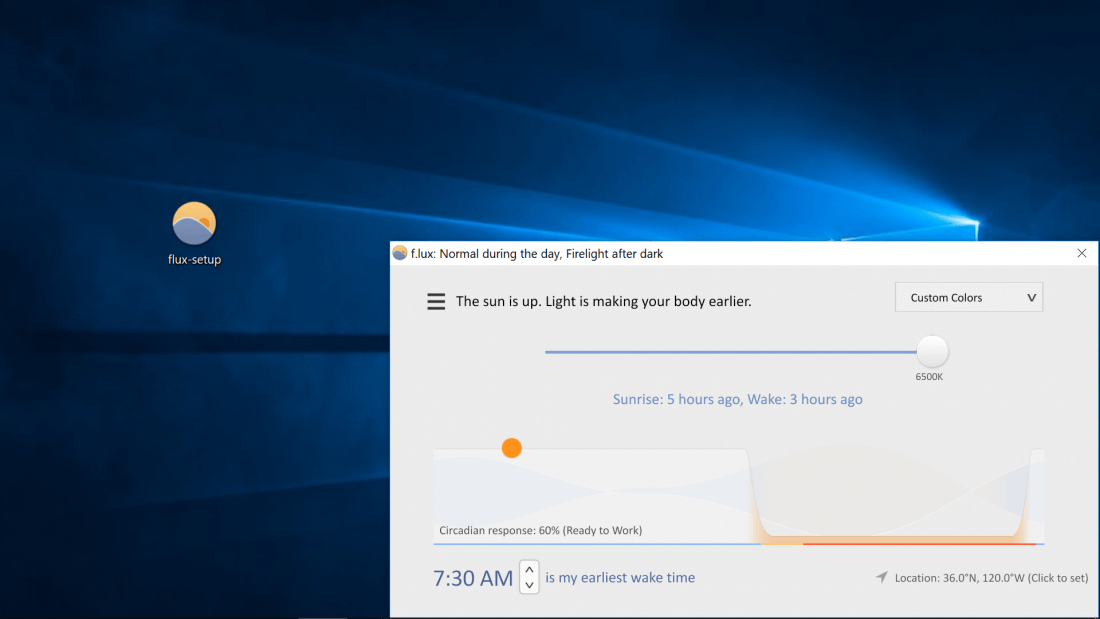
You can also manually change the temperature of your display between eight different colors, 6500K (daylight) being the brightest (blue/white) and 1200K (described as "ember") being the dimmest (orange/yellow).
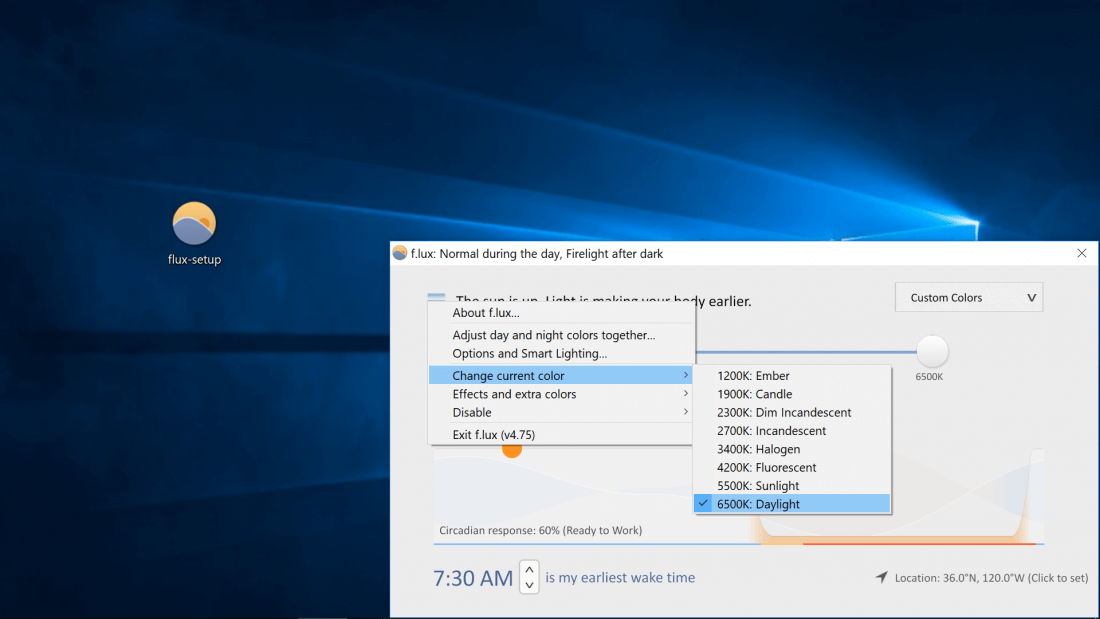
This can be reduced further by using the "Himalayan Salt Lamp" setting found under "Effects and extra colors." Other effects include "Darkroom mode" which makes your background black and text/interface red, "Emerald City" which applies a green tint, and "Soft White" which makes the daylight hue less fatiguing in our opinion, and it can be used in conjunction with the "Reduce Eyestrain" profile option.
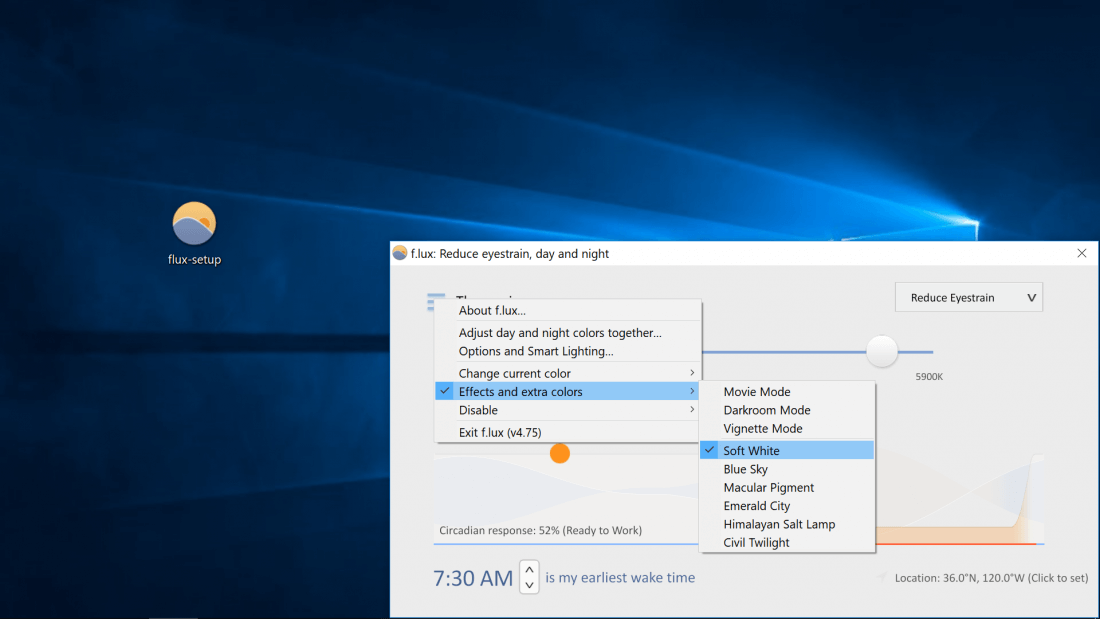
Of note, F.lux can be enabled/disabled with hotkeys and you can set it up so it disables itself automatically when you switch to and from specific applications (say, Photoshop or something where you need the color accuracy).
For those of you with connected lighting systems, the software lists support for Philips Hue, Philips ColorKinetics intelliWhite, YeeLight and LIFX.
Other alternatives to F.lux: SunsetScreen | Iris | Redshift
Folks with the Windows 10 Creators Update can enable the "Night light" feature found in Settings > System > Display, which will automatically apply a similar filter to your display as the sun sets and then remove it at the sun rises.
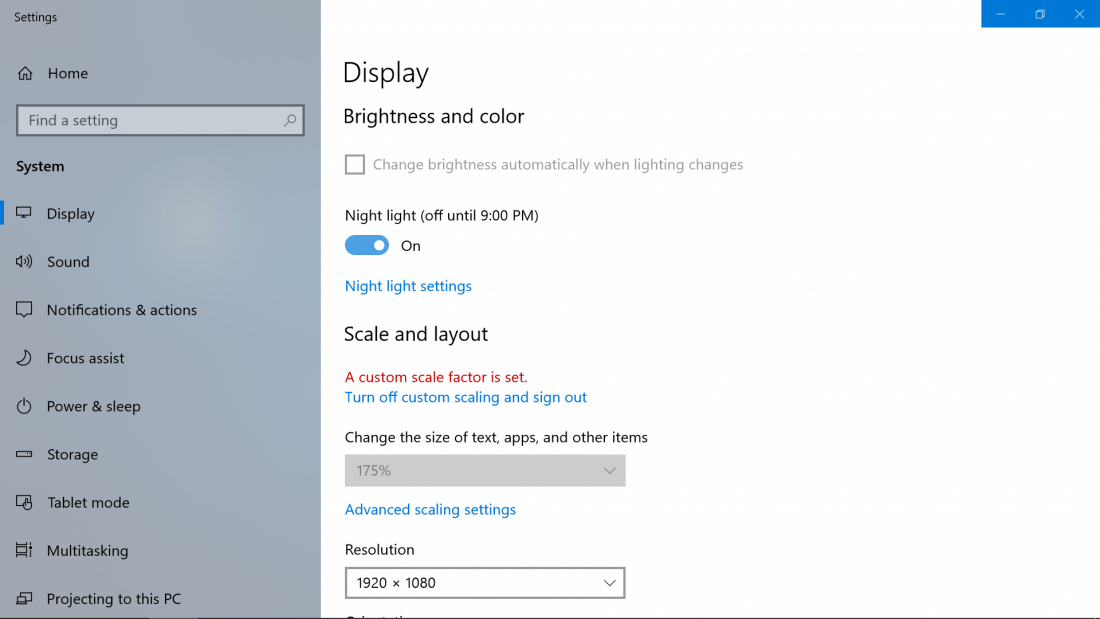
Along with the ability to set custom hours, you can tweak the temperature of the filter with a manual slider in "Night light settings" and the feature can be enabled/disabled without returning to the settings by using the button in the Action Center (beside the Windows clock).
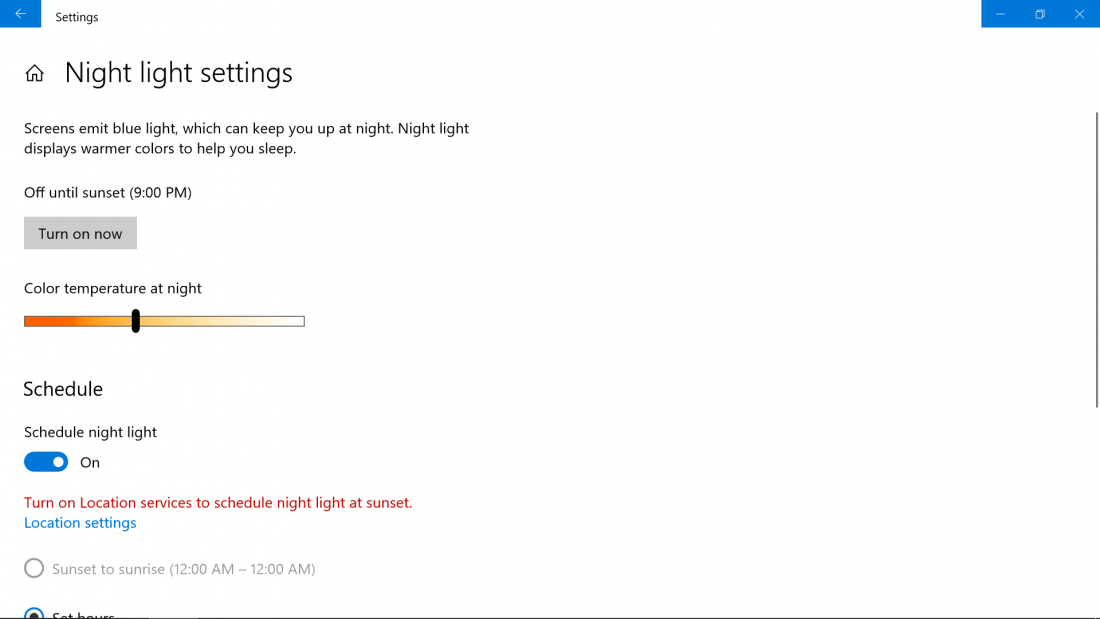
MacOS users from Sierra 10.12.4 onward have an option called "Night Shift" which can be found by navigating to SystemPreferences > Displays > Night Shift (tab)and provides about the same level of functionality as already described for Windows 10.
Night Shift is also available on select iOS devices (iPhone 5s onward, iPod Touch 6G, iPad Air and newer, iPad Mini 2 and newer, and iPad Pro), head to Settings > Display & Brightness > Night Shift.

Android N (or better) provide a "Night Light" feature. The actual name might vary depending on your phone's manufacturer but you should be able to make it out. Head to the Notifications menu >Gear icon > Display > Night Light.
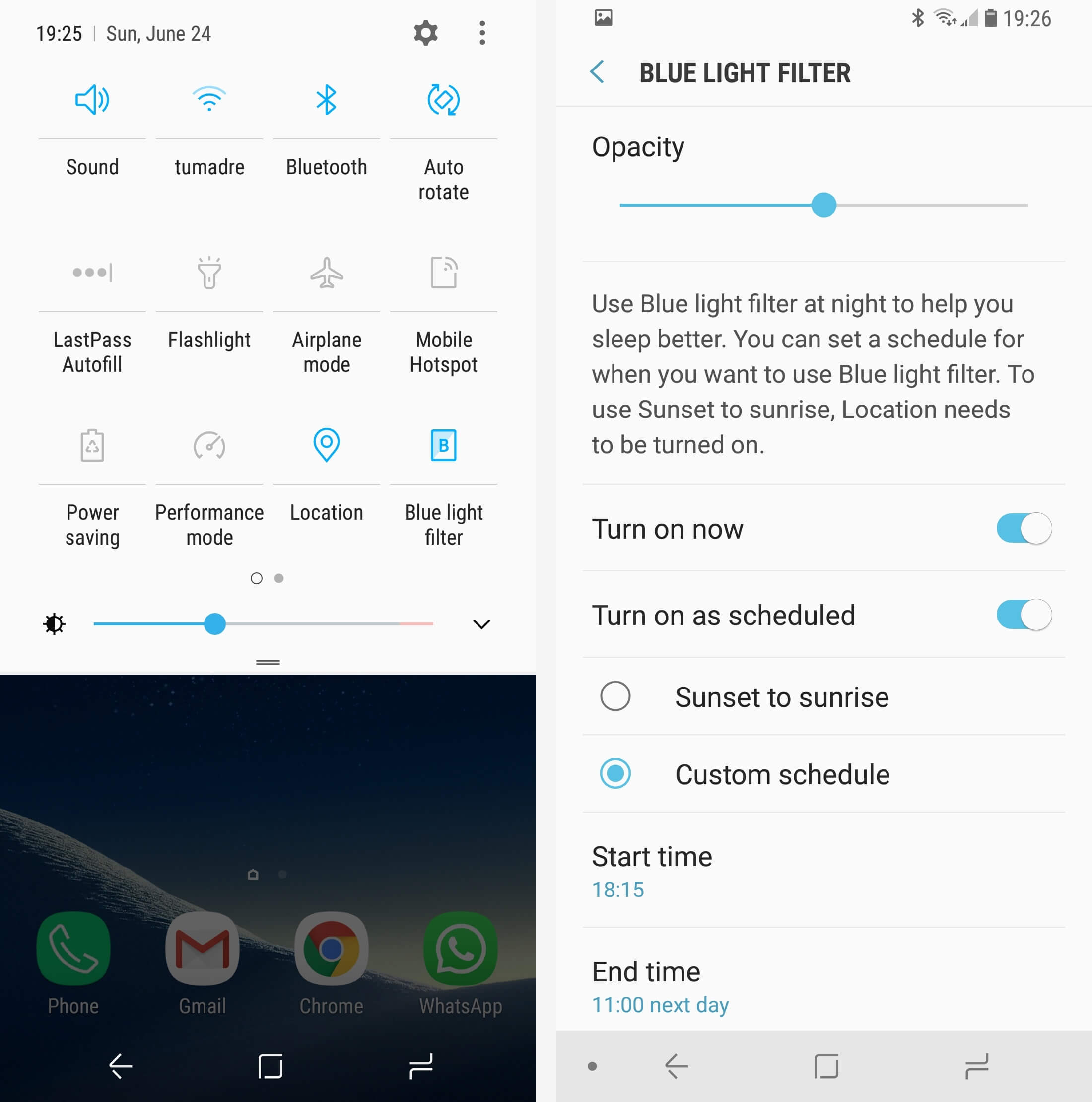
Amazon Fire tablet owners... head to Notifications menu > Settings > Display > Blue Shade.
Masthead photo: Jack Daniel Ocampo Palacios on Unsplash
(Editor: {typename type="name"/})
 Best free ChatGPT courses
Best free ChatGPT courses
 A developer built a 'Law & Order: SVU' episode generator and it's perfect
A developer built a 'Law & Order: SVU' episode generator and it's perfect
 Mustang Hybrid among 13 new electric Ford cars that will soon be a reality
Mustang Hybrid among 13 new electric Ford cars that will soon be a reality
 Leslie Jones responds to news of a Milo Yiannopoulos book deal
Leslie Jones responds to news of a Milo Yiannopoulos book deal
 We tried Sony's new XYN headset: a game
We tried Sony's new XYN headset: a game
Best free gift card deal: Get $10 Best Buy gift card with $100 Apple gift card
 FREE GIFT CARD:As of Feb. 4, Best Buy is offering a free $10 gift card with the purchase of a $100 A
...[Details]
FREE GIFT CARD:As of Feb. 4, Best Buy is offering a free $10 gift card with the purchase of a $100 A
...[Details]
Mars, Venus and the moon are having a cosmic meet
 The moon, Venus and Mars are getting close in the night sky this week. Mars and Venus will appear ju
...[Details]
The moon, Venus and Mars are getting close in the night sky this week. Mars and Venus will appear ju
...[Details]
Google rolls out carrier billing option to Vodafone, Airtel subscribers
 Google has rolled out carrier billing option to two of India’s largest telecom operators, maki
...[Details]
Google has rolled out carrier billing option to two of India’s largest telecom operators, maki
...[Details]
Girl Scout cookie season has finally begun
 Clear off a shelf and and gird your sweet tooth, everyone: Girl Scout cookie season has arrived.Janu
...[Details]
Clear off a shelf and and gird your sweet tooth, everyone: Girl Scout cookie season has arrived.Janu
...[Details]
Best AirPods deal: Apple AirPods 4 for $99.99 at Amazon
 SAVE $30: As of Feb. 3, Apple AirPods 4 are on sale for $99.99 at Amazon, down from their usual pric
...[Details]
SAVE $30: As of Feb. 3, Apple AirPods 4 are on sale for $99.99 at Amazon, down from their usual pric
...[Details]
CES 2017: The 7 tech innovations coming to your next smartphone
 Boring or not, smartphones aren't going away anytime soon. Phones -- specifically, Android phones --
...[Details]
Boring or not, smartphones aren't going away anytime soon. Phones -- specifically, Android phones --
...[Details]
Facebook apologizes for removing photo of nude Neptune statue
 Facebook has come under fire again for blocking a photograph of a 16th-century statue of Neptune, th
...[Details]
Facebook has come under fire again for blocking a photograph of a 16th-century statue of Neptune, th
...[Details]
You can now sell your old products on Amazon India
 Amazon is eyeing old goods and the space of reselling those products as it works on expanding its ec
...[Details]
Amazon is eyeing old goods and the space of reselling those products as it works on expanding its ec
...[Details]
AC Milan vs. Feyenoord 2025 livestream: Watch Champions League for free
 TL;DR:Live stream AC Milan vs. Feyenoord in the Champions League for free on Virgin Media Player. Ac
...[Details]
TL;DR:Live stream AC Milan vs. Feyenoord in the Champions League for free on Virgin Media Player. Ac
...[Details]
Girl Scout cookie season has finally begun
 Clear off a shelf and and gird your sweet tooth, everyone: Girl Scout cookie season has arrived.Janu
...[Details]
Clear off a shelf and and gird your sweet tooth, everyone: Girl Scout cookie season has arrived.Janu
...[Details]
NYT Connections hints and answers for February 5: Tips to solve 'Connections' #605.

Julian Assange says once again that Russia is not Wikileaks' source

接受PR>=1、BR>=1,流量相当,内容相关类链接。